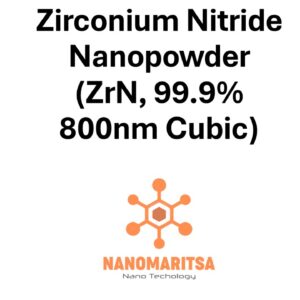Tungsten disulfide (WS₂) is a layered transition metal dichalcogenide known for its excellent lubricating properties, chemical stability, and unique electronic characteristics. In nanopowder form—with a particle size ranging from 40 to 80 nanometers, 99.9+% purity, and an amorphous structure—WS₂ finds utility in applications that require enhanced wear resistance, solid lubrication, and advanced functional materials. Its ultrafine dimensions and high purity enable strong interfacial interactions and uniform dispersion, making it valuable for emerging technologies in electronics, energy, and tribological systems.
Composition and Structure
WS₂ (Tungsten Disulfide)
Tungsten disulfide typically crystallizes in a layered hexagonal structure, but this nanopowder is produced in an amorphous state. Despite the lack of long-range crystalline order, the fundamental WS₂ layers still confer lubricating and chemical properties.
Purity (99.9+%)
Such high purity minimizes impurities and defects, crucial for maintaining consistent lubricating performance and electronic characteristics in sensitive or high-precision applications.
Particle Size (40–80 nm)
Ultrafine particles provide a large surface area, contributing to uniform dispersion in composites or coatings and facilitating strong interfacial bonding with other materials.
Properties
Low Friction and Excellent Lubrication
WS₂ is well known for its robust lubricating capabilities, reducing friction and wear in mechanical systems. The amorphous form can still exhibit these properties, especially when combined with other lubricating additives.
Chemical and Thermal Stability
Tungsten disulfide maintains stability at elevated temperatures and resists chemical degradation, extending its usability in high-temperature or corrosive environments.
Potential Electronic and Optical Characteristics
While crystalline WS₂ is studied for semiconducting properties and bandgap tunability, amorphous WS₂ nanopowder may still exhibit interesting electronic or optical behaviors that can be exploited in research areas like optoelectronics.
High Surface Reactivity
Amorphous materials often possess higher surface reactivity, which can be beneficial in catalytic applications, sensor technologies, or as an interfacial layer in composites.
Applications
Solid Lubricants
WS₂ nanopowder serves as a dry film lubricant or additive in oils and greases. Its nanoscale size enables thorough dispersion, improving wear resistance and reducing friction in mechanical systems such as bearings, gears, and automotive components.
Coatings and Surface Treatments
In industrial settings, WS₂ can be applied as a coating on metal parts to prevent galling, seizing, or abrasive damage. The amorphous structure may provide uniform coverage and consistent protective layers.
Electronics and Energy
WS₂ is part of a broader family of transition metal dichalcogenides studied for next-generation electronics, batteries, and sensors. Amorphous WS₂ could offer distinct properties that complement or differ from the crystalline phase, leading to new device concepts.
Catalytic and Sensor Applications
Its large surface area and chemical resilience make WS₂ nanopowder a candidate for catalytic reactions, pollutant degradation, or sensor development, where synergy with other materials may be optimized.
Recent Advancements and Research Contributions
Massachusetts Institute of Technology (MIT), USA
Investigating hybrid WS₂ nanocomposites for flexible electronics, focusing on novel semiconducting behaviors in both amorphous and crystalline forms.
Tsinghua University, China
Developing new lubrication formulations using WS₂ nanopowder as a primary additive to enhance energy efficiency and reduce mechanical losses in industrial machinery.
National University of Singapore (NUS)
Exploring environmental catalysts based on amorphous WS₂ for eco-friendly pollutant removal and water treatment processes.
University of Cambridge, UK
Studying tribological properties and wear mechanisms of WS₂-based coatings under high-load, high-temperature conditions to optimize protective films in aerospace applications.
Recent Developments
- Composite Films: Blending amorphous WS₂ with polymers, metals, or other nanomaterials is improving lubrication performance, mechanical strength, and environmental resistance.
- Eco-Friendly Synthesis: Researchers are focusing on greener production methods to lower energy usage and reduce toxic byproducts during nanopowder manufacturing.
- Surface Functionalization: Coating or doping WS₂ nanoparticles with other elements is creating materials with tailored electronic and tribological properties, opening new avenues for sensor technologies and catalytic systems.
Future Prospects
Tungsten disulfide nanopowder (WS₂, 40–80 nm, 99.9+%, Amorphous) is set to play a significant role in evolving industries where lubrication, durability, and chemical stability are paramount. Upcoming progress may include:
- Wider Adoption in High-Performance Lubrication for aerospace, automotive, and heavy machinery.
- Breakthroughs in Energy Storage and Sensor Devices, leveraging synergies with other nanomaterials.
- Sustainable Coatings and Films offering both tribological protection and functional properties in extreme environments.
With its excellent lubricity, chemical inertness, and potential electronic or catalytic features, amorphous WS₂ nanopowder remains at the forefront of advanced material research, driving more efficient, reliable, and eco-friendly solutions across mechanical, electronic, and energy-related applications.
| Measurement (gr) | 100 grams, 500 grams, 1000 grams |
|---|






